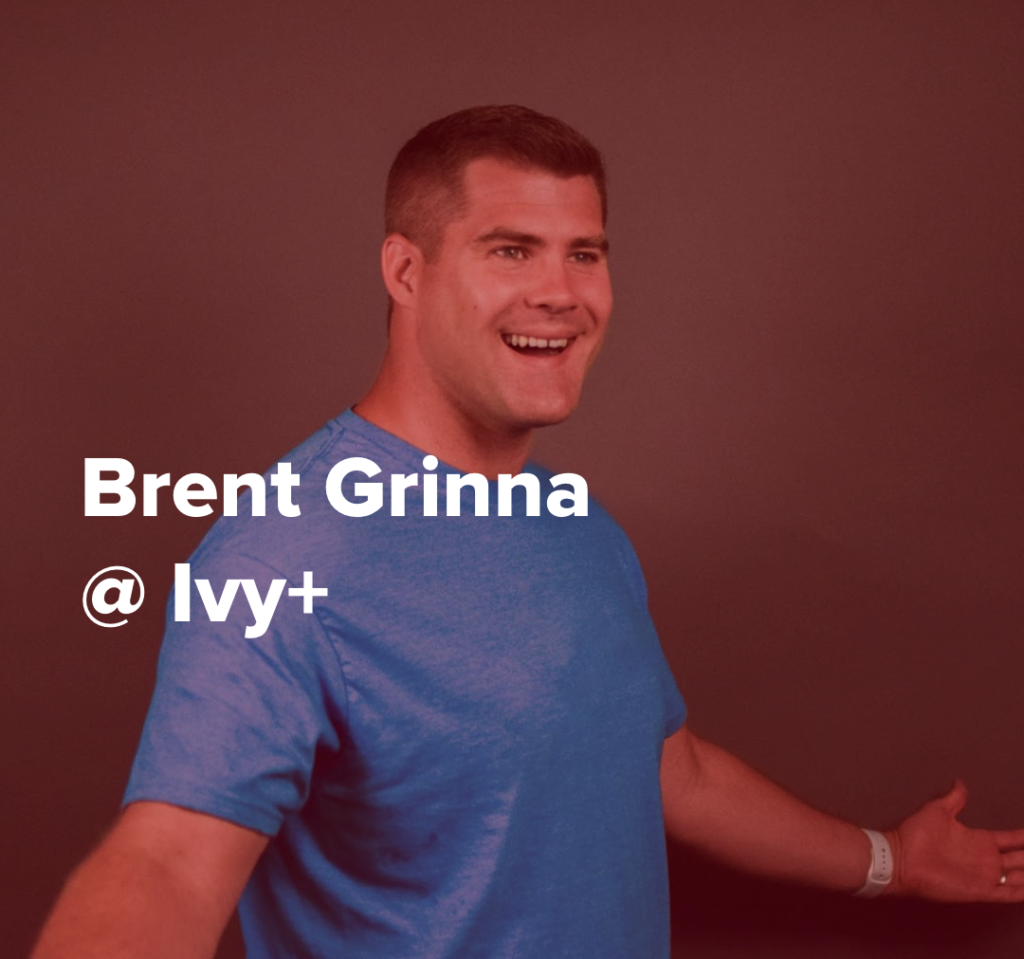Earlier this summer, our CEO Brent Grinna spoke to the Ivy+ group at their Annual Giving conference.
At other conferences, folks in the audience feel the pain points that EverTrue sets out to fix. They feel it in declining alumni participation rates and an over-reliance on a shrinking number of top-top donors. They feel it in donor churn and weak major gift pipelines. They feel it in gift officer burnout and staff turnover. And we just love working with them to fix things.
But the Ivy+ group is distinct.
This group’s endowments are in the billions. Their faculty and programs are so impressive that the mission basically sells itself to major donors. Annual fund participation is comparatively high because alums genuinely feel that they had a unique and unparalleled educational experience. This group doesn’t really feel the pain points that the rest of the industry faces.
…yet.
This fiscal year, the Ivy+ institutions will raise billions of dollars without really needing to innovate, iterate, or invest new technologies. And even though there are pockets of folks at the Ivies who do feel the industry pain points, historically, change has been particularly difficult for the Ivy+. Tradition runs deep, plus “the way we’ve always done things” has brought about a lot of success.
But, red tape and reputation aside, even the Ivies should be figuring out how to talk to more donors in more personal ways. Right? It’s inarguably better for alums and better for the advancement team.
We wouldn’t be EverTrue if we weren’t advocating for change.
So, let’s talk about The Innovator’s Dilemma.
Back at HBS
In 1997, Harvard Professor Clay Christensen wrote “The Innovator’s Dilemma.” (Brent read this book when he took Professor Christensen’s class at HBS.)
The basic premise of the book is that successful, outstanding companies can do everything “right” and still (eventually) lose their market leadership – or even fail – as new, unexpected competitors rise and take over the market.
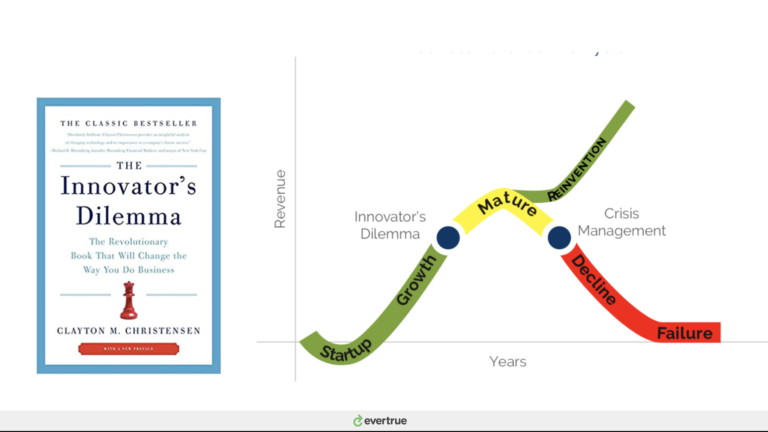
Improving a product takes time and many, many iterations. Newer, smaller companies are forced to invest in new technologies and innovations early-on because it’s the only way for them to generate revenue.
The bigger, giant “incumbent” companies have a huge and loyal customer base, so they don’t really feel the urgency to invest in disruptive technologies. But, eventually, they feel the pinch of the “underdogs” who are well invested in new technologies and are starting to divert customers’ attention.
And then by the time the heavy hitters decide to invest in new tech, they are way behind in their innovation journeys. (…remember Sears?)
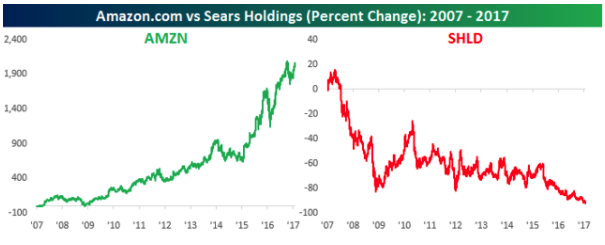
The shift is underway
Let’s look at Kansas State University as an example of an innovative, “new company” on the market. KSU alums generally LOVE KSU, but in order for KSU to stay top-of-mind for their alums, they had to invest in new technologies, innovate early, and iterate lots. Here are just a few examples:
- They were early adopters of video.
- They got their fundraisers in the content game with magic backpacks.
- They gave their fundraisers mobile portfolio management tools.
- They gave their prospect research team the tools to view prospects’ digital engagement with the school’s social media pages, track real-time career moves, and monitor when alums reach confirmed liquid net asset of $1MM or more.
Meanwhile, fundraisers at the Ivies were working directly out of old, clunky, expensive alumni databases. Prospect research teams still used google alerts or pricey wealth engines to identify the latest millionaire alum. And yet, homecomings and reunions were big, packed, happy events. $5billion+ capital campaigns were completed. No innovation required.
BUT! But.
This is exactly the situation that HBS Professor Christensen warned us about.
As Brent said during his presentation, “The very success of the Ivy+ community presents a natural barrier to innovation.”
The institutions in the Ivy+ group will collectively raise billions of dollars every year without having to equip every fundraiser with the EverTrue mobile app so that they can verbally dictate and enter contact reports, search previous contact reports for keywords, and view a map of nearby HNW prospects when a visit gets canceled.
Or replace the phonathon with Student Donor Experience Officers and full-time DXOs to cultivate portfolios of 1,000 prospects like Western Kentucky University did.
Or retrain a team of seasoned fundraisers on cadences, videos, and high-volume outreach like Oregon State University did.
Or create a curriculum on how to be a modern, tech-enabled fundraiser through the Donor Experience Academy, like Emory University did.
^^^These are the Innovators. You’ve all been warned!
Now's the time
One of the points Brent made to the Ivy+ group was that, despite the darkness and morbidity of the past year and a half, there are reasons why advancement professionals should feel more hopeful and excited about their work now than ever before.
Donors are flush with cash. Savings rates are higher than ever.
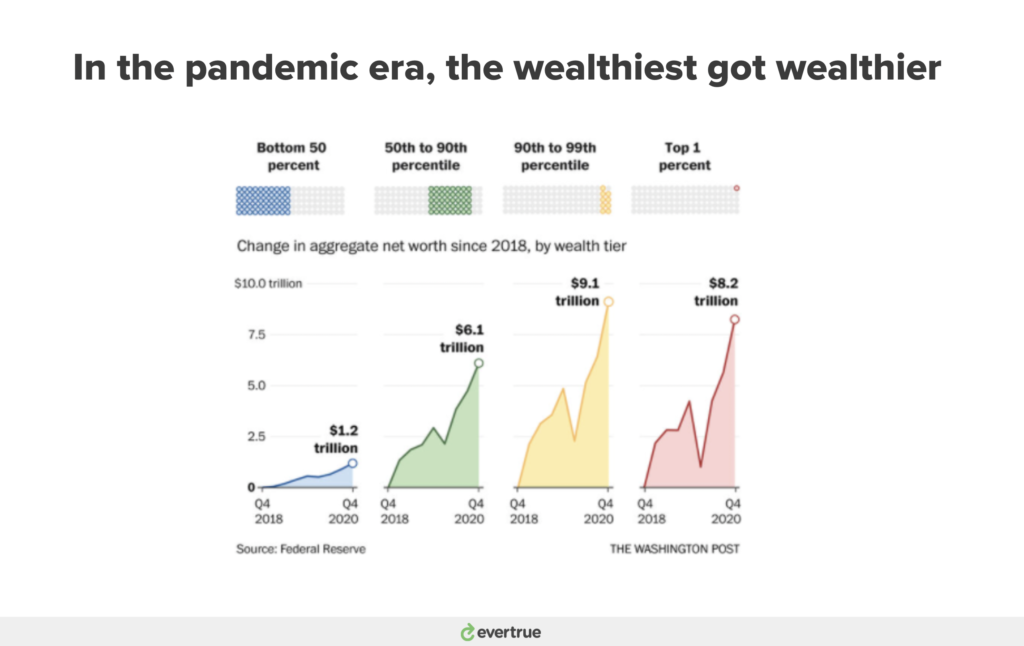
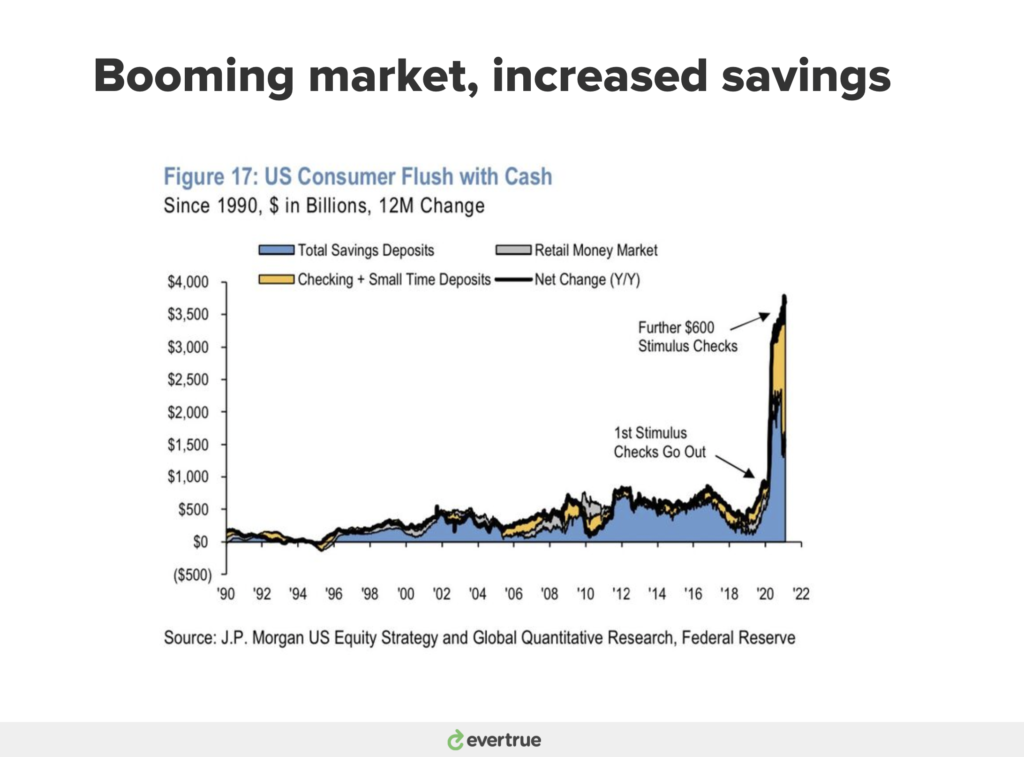
So, if, through grit, determination, and necessity, Nebraska DXOs can hold 69 meetings in their first 90 days on the job; if the University of Wyoming can 300x the number of prospects in gift officer portfolios; if donors who meet with DXOs gave 98% more than they gave in the prior year, then here’s the question Brent posed to the Ivy+ group:
If the most successful, best-resourced, best-staffed advancement shops in the world applied even one or two of these tech-enabled innovations to their workflows, imagine what the results would look like?
Here’s the homework Brent gave the Ivy+ group to avoid falling victim to the Dilemma:
- Read The Innovator’s Dilemma.
- Test your own outreach cadence (minimum of 6 outreach points!) with 25 prospects. Politely persist.
- Create a “breakup email” to send to alumni who have been unresponsive. Test it out.
- Monitor when alumni change companies or get promoted and send a personalized “congrats” video.
- Keep tabs on which alumni and friends are engaging on your school’s social pages. Follow up.
The warning from The Innovator’s Dilemma is to not sit back and rely on reputation. Greatness is not a given. If change is the only constant in life, then even the grandest of institutions have to make changes to stay in the game. #innovationorbust
